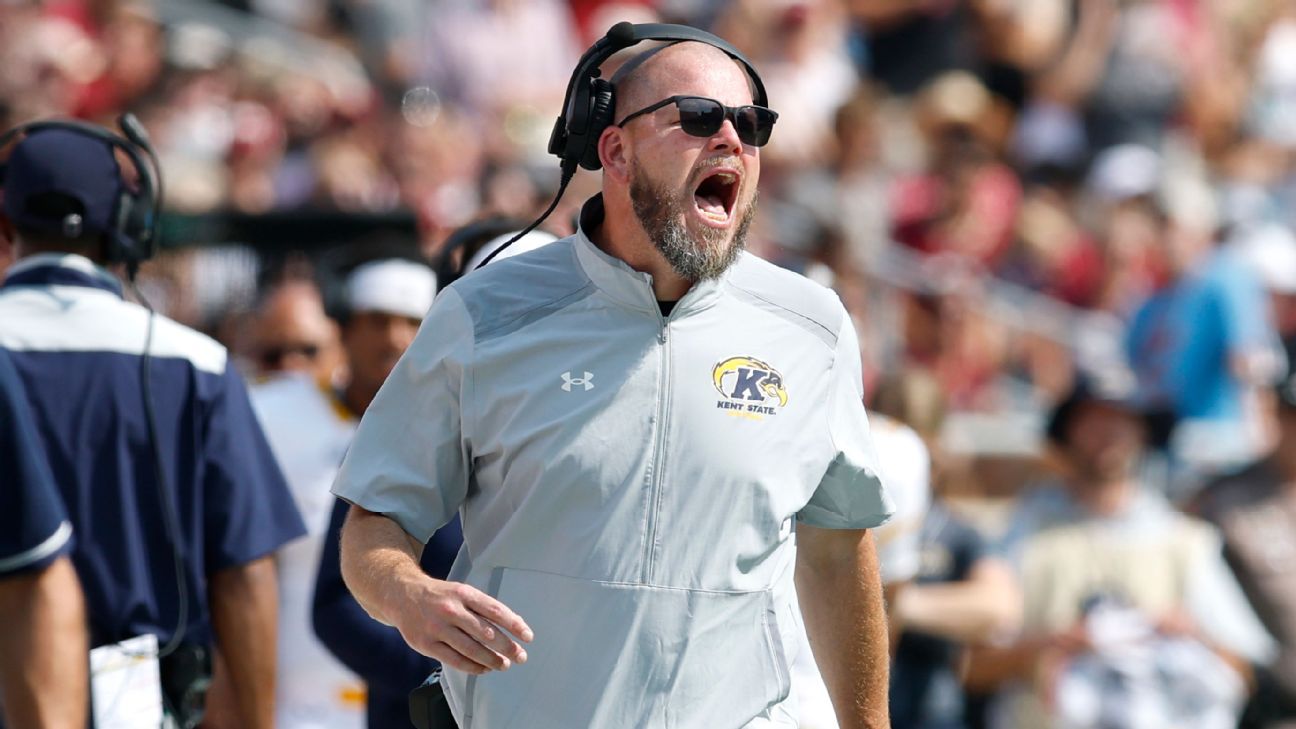Packers Depth Chart Update: Christian Watson overtakes Matthew Golden at WR

Sorry for the day delay, but I’ve finally pored through the Green Bay Packers’ win over the Pittsburgh Steelers to bring up all the little nuggets about what changed on the team’s depth chart, both going into the game and in-game. Here’s our explainer on who is playing where, why and how often for your Packers.As always, the number in each cell corresponds to how many real snaps a player has played on offense or defense. We include plays where there was a post-snap penalty (example: holding), but not a pre-snap penalty (example: a false start). Also excluded are kneels and spikes.Cells highlighted in yellow mean that a player was injured during that game and did not return. Cells highlighted in red mean that a player was injured and missed the game entirely. Cells in black mean that a player was a healthy scratch for that game.Offensive PersonnelOutside of one set with three tight ends (13 personnel), the Packers played just two personnel packages all game against the Steelers. Overall, Green Bay played more three-receiver sets than they did last week, when they played multiple tight end looks at a higher rate. Assume that this is what you’re going to see from the Packers moving forward, now that they have Christian Watson back in the mix. This number might even rise when Jayden Reed returns from injury, too. Reinforcements are coming!QuarterbacksJordan Love is your quarterback.Running BacksI’m not sure whether or not the Packers are still trying to limit Josh Jacobs’ touches while he comes off his calf issue, but Emanuel Wilson has played 47 snaps over the last two games (23.5 per) after averaging just 10.6 snaps out of the backfield over the first five weeks of the season.Those opportunities have turned into 17 carries for 78 yards (4.6 YPC), which drops nearly a full yard if you don’t include his long of 15 against the Steelers. He hasn’t been a consistent chain mover for the Packers, but he does have some moments. Either way, snaps have been about a 4:3 ratio between Jacobs and Wilson over the last two weeks. Prior to that, it was about a 9:2 ratio between the two.For what it’s worth, they’re giving Wilson full drives right now, rather than really rotating backs mid-drive. So if you see Wilson out there on the drive starter, assume he’s gonna go the distance until the team punts, kicks or scores. That’s just sort of how they’re doing it right now.ReceiversSo much for that Christian Watson pitch count. Already, he was the second-most-played outside receiver for the Packers in his 2025 debut, displacing first-round rookie Matthew Golden. Expect Golden to get most of his work in the slot moving forward, especially when Dontayvion Wicks returns from his calf injury. Golden has primarily been a slot receiver since Week 4, which will get tricky whenever Jayden Reed returns to action. There’s a world where he gets pushed down to WR4 by the end of the season.If you’re wondering when Savion Williams got 10 snaps at receiver positions this week after recording just 19 in the first six games of the season, you’re not alone. When I first saw the snap counts, I didn’t remember Williams being on the field that much in this game. Most of his work came in the fourth quarter when the game was already decided and the team just wanted to run the ball to keep the clock moving.Tight EndsFor the first time since Week 3, John FitzPatrick out-snapped Luke Musgrave. Fitzpatrick did a good job of blocking Steelers edge rushers one-on-one when he had the opportunity. Tucker Kraft continues to be an almost every-down player for this team. It’s time to start the All-Pro campaign.Offensive LinemenA couple of injury replacement notes here on the front end. Anthony Belton has taken every backup left tackle snap for this team this season. Keep that in mind. Over the last four games, it’s been Darian Kinnard exclusively who has taken over as Zach Tom’s injury replacement.The Packers have said that they want Jordan Morgan to practice one position a week after forcing him to play three different positions in the first four weeks of the season. Morgan is now splitting time at right guard with Sean Rhyan, who, for the most part, went one series on, one series off in this game. Morgan did get inserted mid-drive for Rhyan on a longer drive, which begs this question: Does the team think that Rhyan is their better guard, but that he can’t hold up for a full 60-minute football game? Why else would they be rotating like this? I’m not sure.Defensive PersonnelWe all knew that the Packers’ game plan would feature a lot of base 4-3 defense this week, because of how heavy the Pittsburgh Steelers’ offensive personnel is. The 4-3 defense was neck and neck with the team’s true nickel defense snaps in this game. On the season, Green Bay has played its base defense 26 percent of the time, but it jumped up to 38 percent this week.Another victim of the true nickel package was the Packers’ Cheetah nickel package, which features three defensive ends on the field. When Green Bay was in nickel in this game, they frequently were playing it out of Cheetah, a 35 percent rate. That’s the highest Cheetah rate for Green Bay out of nickel sets all season.In short, they had to play a lot of 4-3 because of the Steelers’ multiple tight end sets. When they weren’t playing 4-3, it was usually on obvious passing downs, where the Packers just played Cheetah instead of their stock nickel look.Defensive EndsThere’s nothing too surprising here, unless you want to talk about how Arron Mosby hasn’t gotten on the field on defense once in two weeks as a practice squad call-up. Mosby, a former off-ball linebacker, is really a special teams player on this team, not a defender.The one adjustment the Packers made this week was getting out of their defensive tackle playing defense end looks, something they did seven times against the Arizona Cardinals on early downs last week. I’m a little surprised they didn’t do it against a team that played so many multiple-tight-end sets as the Steelers, but maybe Green Bay just thought they needed to save their defensive tackles’ legs.Defensive TacklesDevonte Wyatt returned from his knee injury this week. He was the third-most-played defensive tackle out of the bunch, but he was very much in a pretty equal rotation with Karl Brooks and Colby Wooden. Nazir Stackhouse only got on the field for five plays, most of which came on one long drive in the first half. When Warren Brinson is healthy, he will probably take Stackhouse’s spot on the gameday roster.In this game, Micah Parsons was the player who lined up the most at defensive tackle in the team’s Cheetah packages, often in a stand-up role. Last week, the defensive end who kicked inside the most was Barryn Sorrell. Generally, this is Lukas Van Ness’ role when healthy.The Steelers took advantage of the Packers’ Cheetah package a couple of times, going hurry-up no-huddle — which forced Green Bay to keep the same personnel package on the field for base downs — when they converted on third or fourth downs. More teams will probably try that moving forward, as you’d rather get back on the ball and run against Kingsley Enagbare at defensive tackle than substitute, huddle up and then try to run at Devonte Wyatt.LinebackersMore of the same at linebacker. The only snap at linebacker for Ty’Ron Hopper and Xavier McKinney this week was in the Packers’ goal line package, which they played on the second two-point conversion attempt near the end of the game. In that goal line look, the team has four defensive tackles, two defensive ends and five linebackers.The only other time that the Packers had used that goal-line package was against the Cleveland Browns.CornerbacksYOU WERE LIED TO.All week, head coach Matt LaFleur and defensive coordinator Jeff Hafley said that they were going to stick with their guy, Nate Hobbs, and live with the ups and downs of the free-agent signing converting from the slot, which he played with the Las Vegas Raiders, to outside cornerback. Instead, Carrington Valentine played every single snap of defense in this game. OUT OF NOWHERE.The one play that Hobbs lined up as an outside cornerback was on the Steelers’ first two-point conversion attempt, the last time we saw the Packers’ cornerbacks. Interestingly, Keisean Nixon was benched for that rep in favor of Hobbs after a long drive that featured a lot of hurry-up no-huddle.I wouldn’t count out a Nixon/Hobbs rotation opposite Valentine, if Valentine wins a starting job. The team will try to justify the Hobbs signing with playing time somewhere. If Nixon is a part-time defender…hopefully that means we can get the All-Pro back on the kick return unit.Slot DefendersJavon Bullard was the full-time slot in this game, with Nate Hobbs’ three snaps coming on one dime look (where two slot defenders are played) and two obvious passing situations where he subbed in for Bullard. That’s…an interesting way to do it.The Packers mostly match 11 personnel (three receiver sets) with their nickel defense. Teams are more likely to pass out of three-receiver sets than sets with heavier personnel. If Green Bay thinks that Hobbs, who has done pretty well out of the slot this year, is a better coverage defender there than Bullard, you’d think they’d rotate them a little more. Instead, the Packers are not only giving Bullard all of these slot reps, but they’re also trying to get him on the field more as a safety, too.I’m not sold that Green Bay’s best secondary right now isn’t Hobbs in the slot, Keisean Nixon and Carrington Valentine on the outside and Xavier McKinney and Evan Williams at safety.SafetiesAs mentioned before, the Packers have opened up the safety rotation over the last two weeks. From Week 2 through Week 6, Javon Bullard didn’t play a snap at true safety. Those all went to Evan Williams, with Bullard exclusively playing in the slot. Over the last two games, though, they’ve split snaps when in their 4-3 base, where Bullard is free to play safety as there is no slot defender on the field.This week, Williams got the first and third quarters at safety, while Bullard played the second and fourth quarters. It didn’t seem to be some sort of situational call, like when Nate Hobbs plays the slot in very obvious passing situations. It was just a quarter-by-quarter rotation, like how right guard is a series-by-series rotation. The only exception was the last drive of the game, when Williams subbed in for Bullard on the first two-point conversion attempt by the Steelers. Prior to that play — which ended with a penalty, the ball being moved up and the goal line defense entering the game — Bullard had been playing 4-3 safety that drive.Personally, I think Williams is playing better than Bullard. I think the Packers playing Williams in a “got to have it” situation means that they think so, too.















